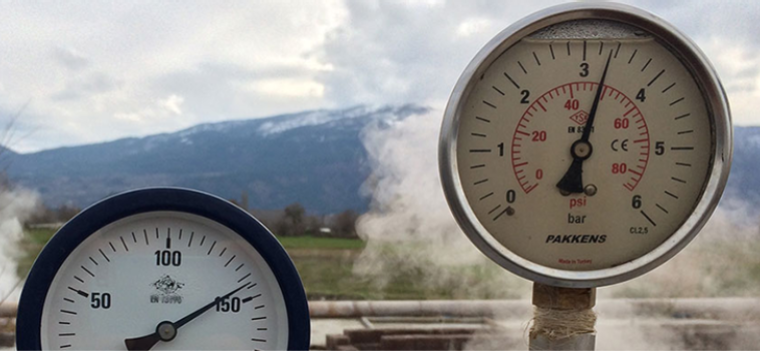News
- As Paris climate agreement goes into effect, geothermal energy development picks up momentum to help countries lower greenhouse gas emissions and meet their energy targets.
- A US$350 million World Bank project in Turkey will help scale up private sector investment in geothermal energy development by helping to reduce investor risks.
- The Energy Sector Management Assistance Program’s Global Geothermal Development Plan assisted Turkey in developing and mobilizing funding for the project and it is accelerating the pace of global geothermal investments.
Increasingly warmer temperatures around the earth can signal a troubling future for the planet. But hot temperatures inside the earth can be good news for all.
Geothermal energy – a form of renewable energy derived from the earth’s magma – can contribute to climate change mitigation by offering low-carbon baseload power that many countries could potentially tap into as a clean and reliable option to expand access to affordable electricity.
Turkey is facing a growing demand for energy while committing to having 30% of its total energy come from renewable energy sources by 2023. Geothermal energy offers the country an opportunity to align economic growth and climate action.
That is why its Government partnered with the World Bank and the Clean Technology Fund (CTF) on a US$350 million project to scale up private sector investment for geothermal development by reducing the risks taken on by investors during early-stage drilling. This would be done through a Risk Sharing Mechanism (RSM) and by providing access to long term financing.
Turkish citizens will benefit from new economic and employment opportunities created by increased geothermal development. The global community will also benefit from the lessons learned through use of the risk sharing facility in designing similar mechanisms to stimulate geothermal exploration in other markets.
Worldwide renewable energy investment hit a new record in 2015 with $286 billion flowing into the sector, mostly by emerging economies. But compared to other renewables, geothermal has been lagging behind. Production today stands at only 7% of global energy output. Out of the 90 countries with geothermal potential, only 27 use it to produce electricity according to the International Geothermal Association.
The main reason is that geothermal energy’s potential is not known until a fairly large investment is committed upfront for exploration, which may reveal inadequate resources to produce power. Most investors and developers are not willing to take the risk.
To help tackle these obstacles, the World Bank launched in 2013 the Global Geothermal Development Plan (GGDP), an initiative led by its Energy Sector Management Assistance Program (ESMAP). The initiative aims to accelerate the pace of investments in developing countries by helping to mobilize capital for exploration and strengthen capacity for early-stage drilling.
Since its launch, ESMAP mobilized $235 million through the Clean Technology Fund (CTF), which is expected to leverage at least US$1.5 billion in public and private funds. By raising awareness on the importance of focusing scarce concessional funding into riskier investments, the plan has also helped triple the share of multilateral financing in the geothermal sector allocated to exploration from 6% in 2012 to 17% in 2015.
Including Turkey, so far, 13 countries have received technical assistance from ESMAP to identify and prepare projects. Projects in Armenia, Djibouti and St. Lucia are now being implemented with support from the World Bank:
-
In Djibouti, a US$6 million IDA concessional credit supporting a US$32 million Geothermal Power Generation Project is helping to assess the commercial viability of the resource in Fiale Caldera within the Lake Assal region. The project has the potential to reduce electricity costs, which have been an obstacle to the country’s development, and boost access to electricity for the entire population.
-
In Armenia, a US$8.55 million grant from the Scaling-up Renewable Energy Program (SREP) is helping to confirm the resource’s suitability for power generation in the Sjunik region’s Karkar site.
-
In St. Lucia, USD 3.5 million grant (including US$1 million for the Global Environment Facility) is helping geothermal development preparation upstream, including regulatory support
In more developed geothermal markets such as Indonesia, ESMAP helped leverage a US$50 million CTF contingent recovery grant to capitalize a risk mitigation facility for exploration drilling, as well as a US$6.25 million Global Environment Facility (GEF) grant for technical assistance and capacity building. The aim is to increase energy access to populations in Eastern Indonesia, an area with high poverty rates and expensive diesel-fired power generation.
The World Bank is also supporting the preparation of national strategies to develop the sector in some key geothermal countries. For instance, in Kenya, ESMAP is financing the preparation of a National Geothermal Strategy to mobilize public and private investment to increase the pace of geothermal development, in line with the Government’s Vision 2030. The World Bank is also co-financing local infrastructure for the development of the Olkaria I & IV geothermal fields - one of the largest single geothermal investment projects in the world.
ESMAP has also supported the preparation of a globally-applicable, harmonized standard to streamline measurement of geothermal resources across fields. The standard, which was adopted by UNFC-2009 on Sept. 30 2016, will be crucial in building trust among policy makers, investors and the public to position and scale up geothermal in the global energy mix.
Related Links:
